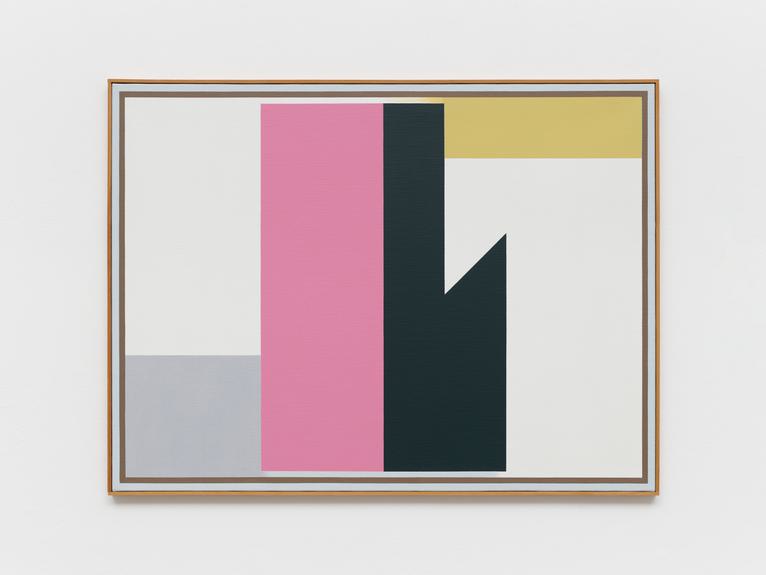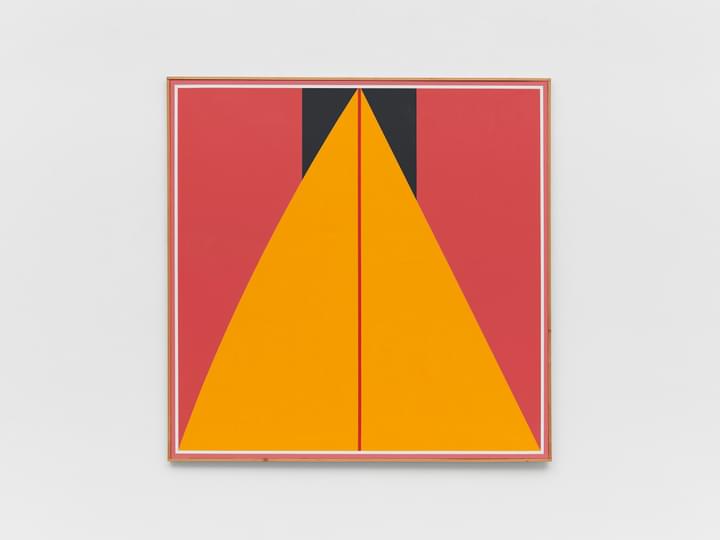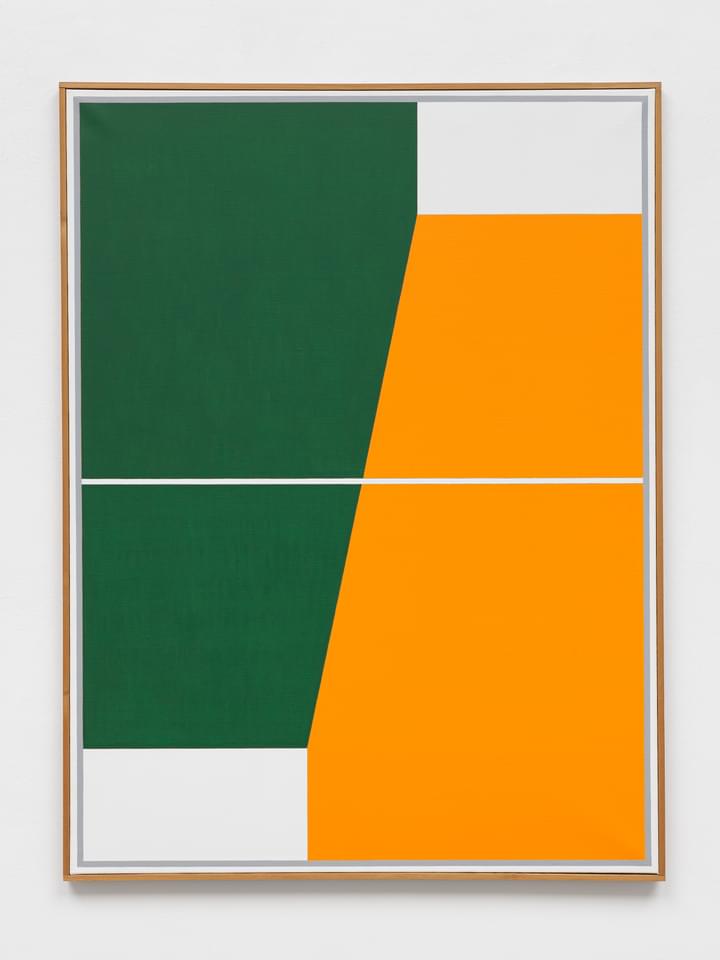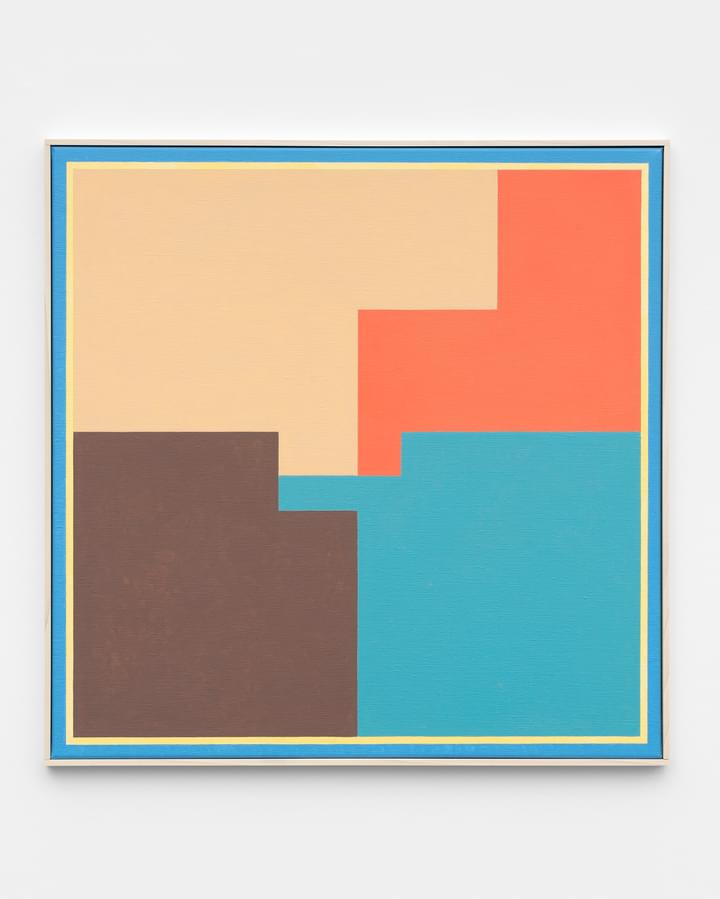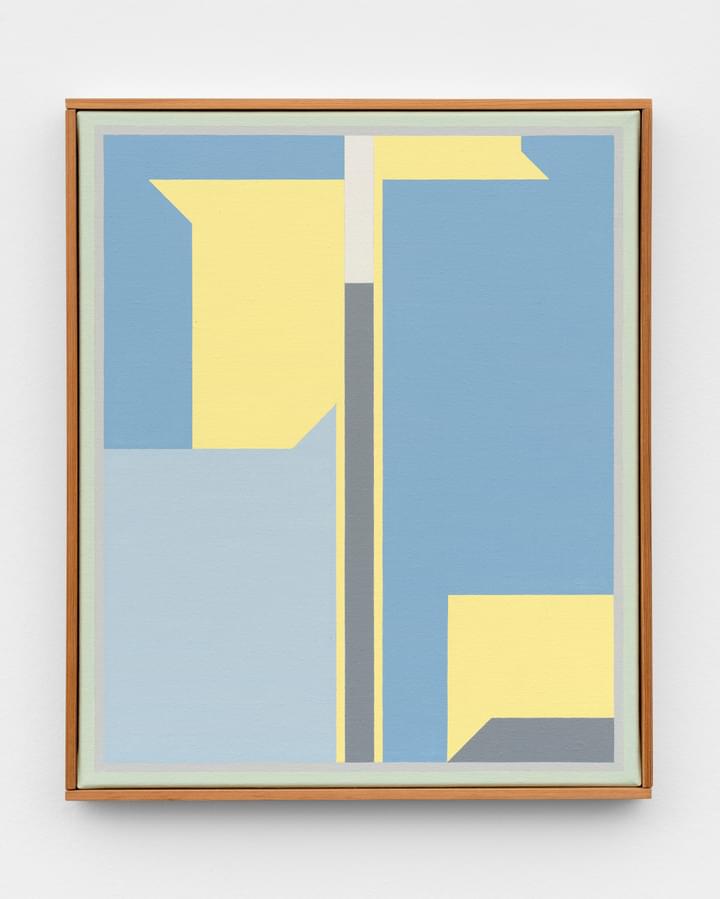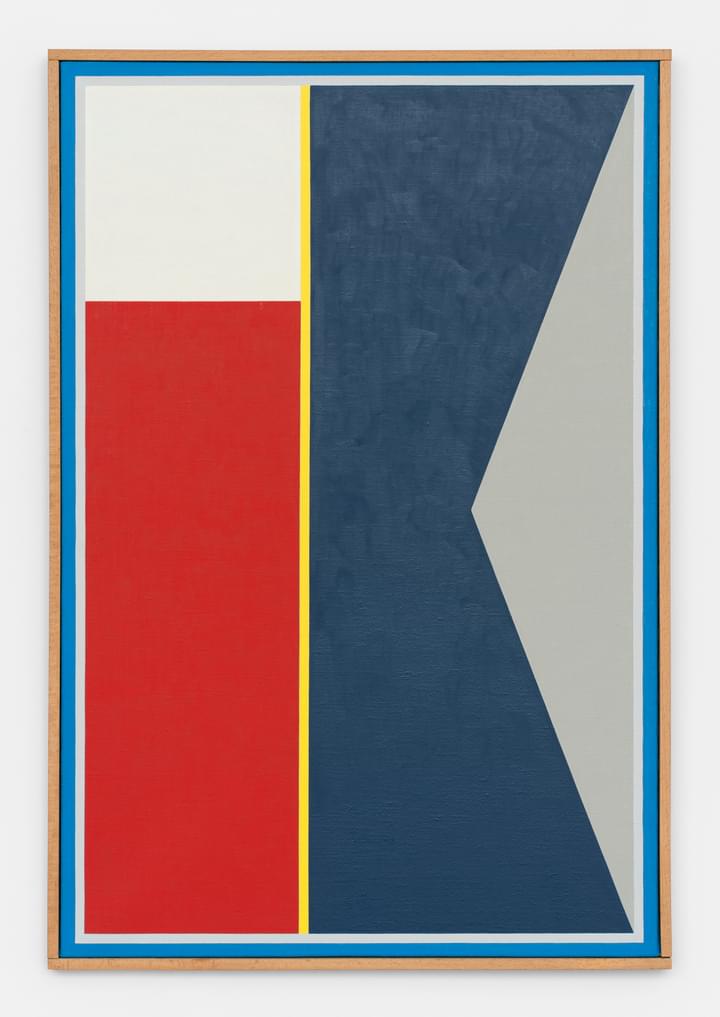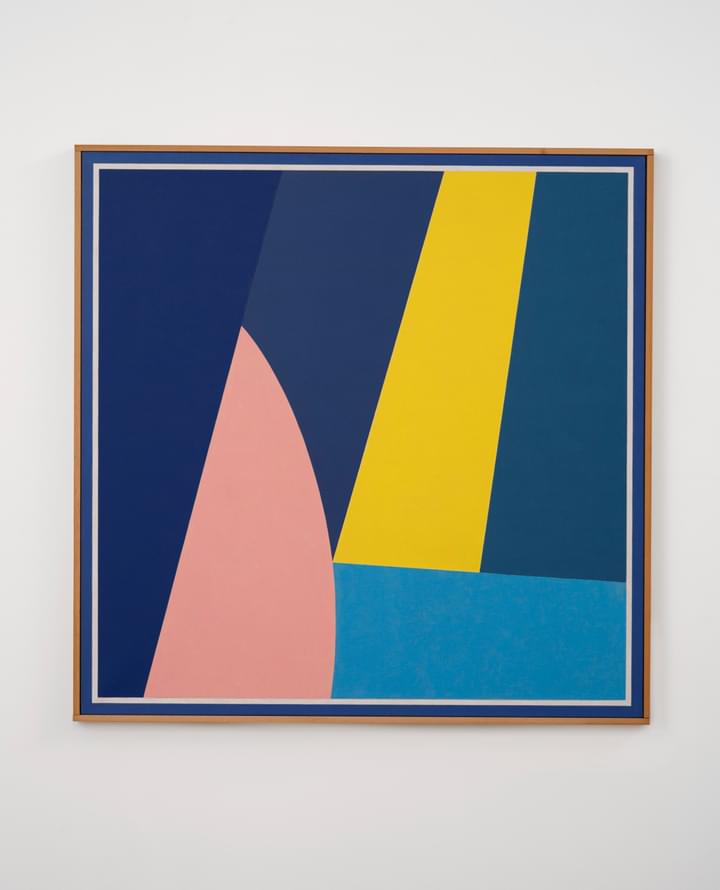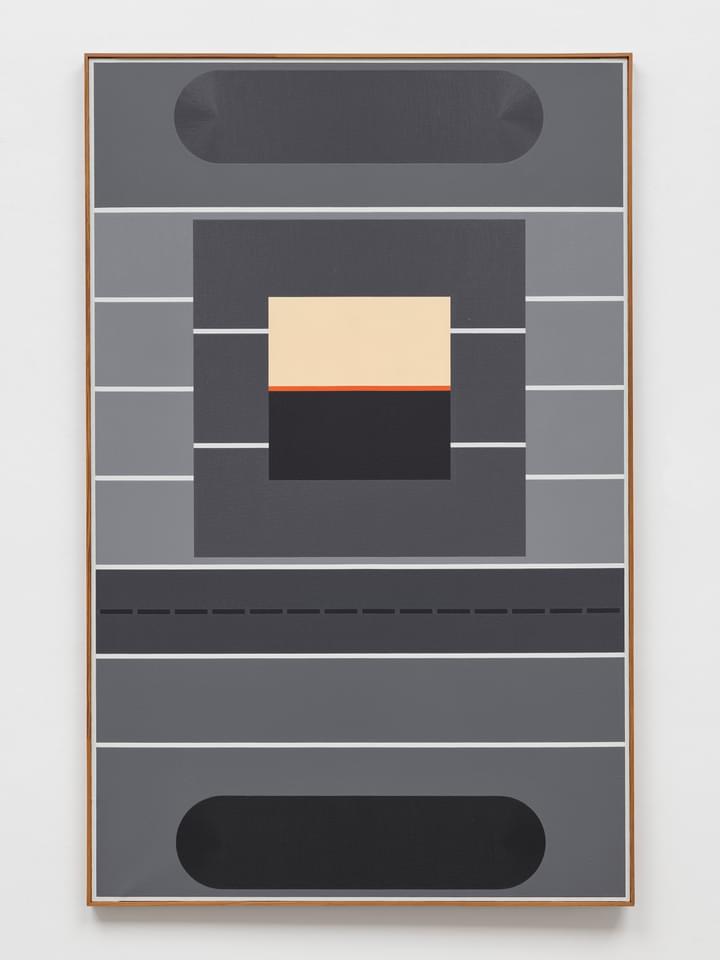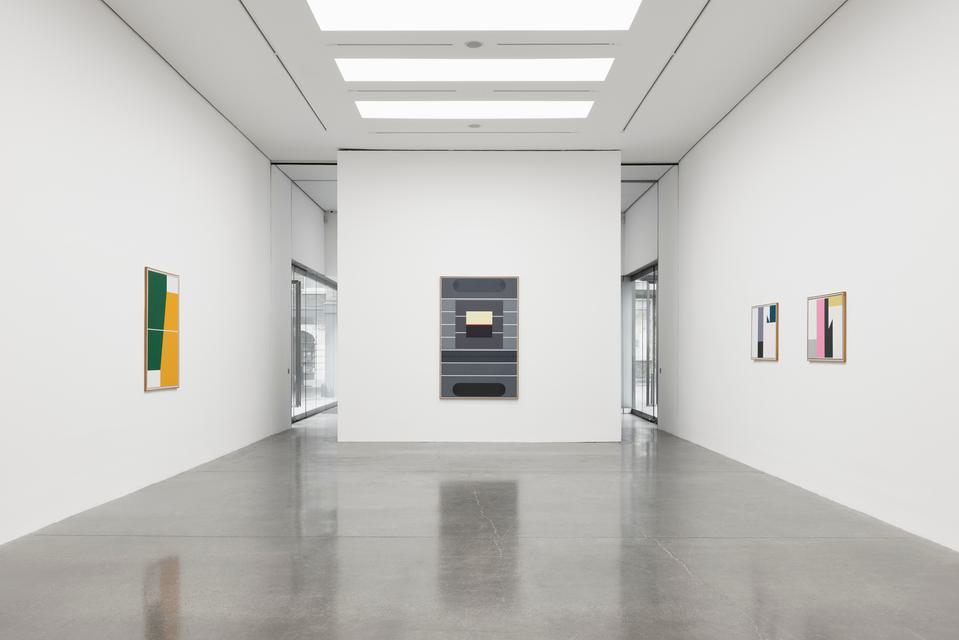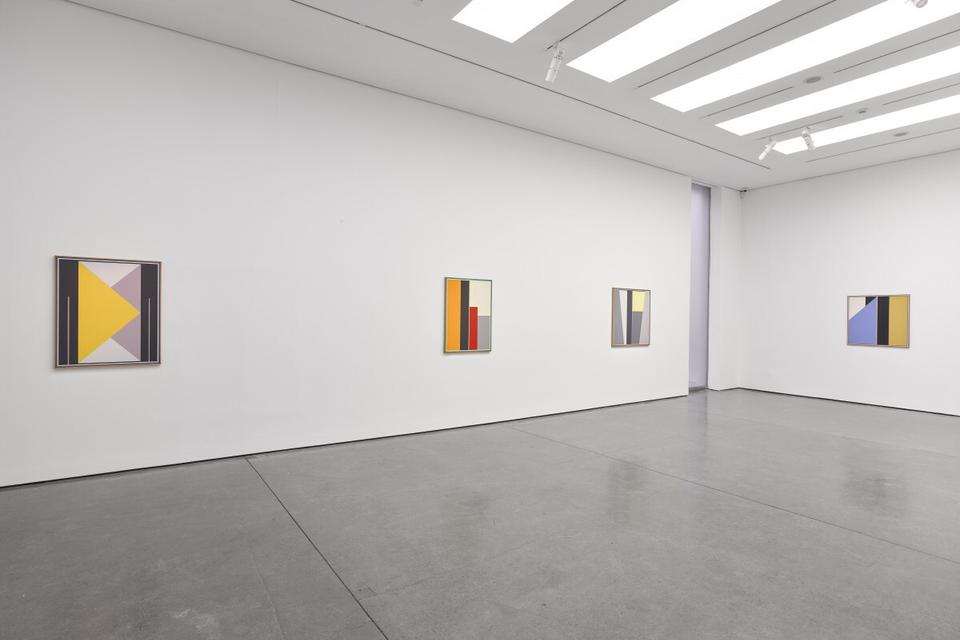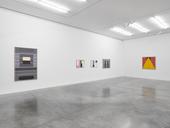Born in Liège in 1938, Wuidar often cites childhood recollections of post-war Belgium as formative to the development of his practice, as well as his friendship with the late Belgian architect Charles Vandenhove, who designed the Brutalist house and studio in Esneux where Wuidar now lives and works. A drawing and graphic arts teacher since 1959, early on Wuidar explored many different artistic styles through self-directed study – naturalistic illustrations were as much part of his practice as were still lifes or works inspired by Cubism and Surrealism. But by the 1960s, Wuidar directed his focus fully to a form of painting that would ultimately define his career.
Wuidar’s early paintings reflect his long-standing interest in the work of Paul Klee, as well as the Cubist/Surrealist posters of AM Cassandre. The artist’s palette during this period was mostly neutral, employing earthy tones and bearing representational motifs intended to be evocative and associative rather than emblematic. The composition Comme un fruit étrange dans la bouche (1967), for example, revolves around what the artist has identified as ‘the Pharaoh’s cartouche’, a rectangle with rounded ends. Works such as this demonstrate Wuidar’s systematic and suggestive use of shapes, and a love of the ‘naivety’ that he has found in ancient Egyptian art. Elsewhere, recognisable details – a face, an eye, a house or a spider – have been made distinct, executed with a clarity and precision that both accentuates the incongruity of their presence within the arrangement of shapes and, in the case of Arlequin à l’oeil, 21 mai 66 (1966) and Composition avec des chevrons (1968), their comfortable co-existence within a greater pattern. Characterised by shades of grey, brown and black, which contrast with lighter ochre, white, russet and pink, there is a surreal language at play in the paintings of the ’60s - both open ended and concrete.
In the 1970s Wuidar’s palette can be seen to expand. As with the paintings of the previous decade, there are echoes of architectural structures - of borders, frames and compartmentalised areas - but within these arrangements, curved and rectilinear lines and shapes interact, often mirrored, rotated or repeated on the picture plane to unite as a resolved image. Paintings such as Composition au trait interrompu, 21 juillet 79 (1979) are increasingly informed by graphic procedures of reduction, stylisation and bold outlines and exhibit an insistent connection to an architectonic machinery. Assemblages of triangles and quadrangles allude to buildings, corridors and rooms, yet a quiet domesticity pervades the paintings, in part owing to their domestic size. As the artist remarks: ‘My paintings are like an interior. Small paintings of the 17th century with modest themes, or even the work of Italian painter and printmaker Giorgio Morandi, radiate this same sense of intimacy.’
The 1980s ushered a shift of focus towards compositions defined by a vertical or horizontal bisecting line, serving as the organising principle for his paintings. Despite their deceptive simplicity, the titles imbue the works with the artist’s vivid temporal awareness, referencing specific days, months and years. In a manner akin to ‘a writer who keeps a diary for the sake of writing’, the artist established a daily habit of drawing in sketchbooks, a personal ritual that to this day remains integral to his process.
Wuidar’s interest in typographic forms and the rhythm of language has consistently fed into his works, prompting him to develop his own typeface in order to resolve form and content. Wuidar’s 1984 painting, Ils ont des yeux et ils ne voient point (They have eyes and they do not see), provides evidence of how this interest found its way into his paintings. The wording aligns the subject, content and title, literalising the connection between the signified and the signifier. In a self-referential way, these layers of meaning define the work’s inherent game of observation, perception and cognition.
In addition to complete sentences, specific words, as in Décembre 2002 (2002) or individual letters, as in Juillet 2006 (2006), also serve as constitutive visual elements in Wuidar’s work. Although he does not see himself as a representative of concrete poetry, his intelligent word-image inventions evoke such associations. In A perte de vue (1970), the artist turns the title into a game that involves transforming the original wording into an anagram.
Wuidar’s paintings are polysemous, interpretations are multiple and continuously generating new meaning. As the artist himself asserts, ‘the viewer makes the artwork’.
Léon Wuidar was born in 1938 in Liège and lives and works in Esneux, Belgium. Recent solo exhibitions include ‘Léon Wuidar’, White Cube Mason’s Yard, London (2022); ‘Léon Wuidar. Travaux sur papier’, Galerie LRS52, Liège, Belgium (2022); ‘La peinture au quotidien, 2001–2021’, Rodolphe Janssen, Brussels (2021); Musée des Arts Contemporains, Grand-Hornu, Belgium (2021); ‘Léon Wuidar’, Museum Haus Konstruktiv, Zurich (2020); White Cube Mason’s Yard, London (2018); ‘Inventaire’, Rodolphe Janssen, Brussels (2018); White Cube Bermondsey, London (2018); ‘Mot à mots’, Rodolphe Janssen, Brussels (2017); ‘Paintings from the 80s’, Rodolphe Janssen, Brussels (2016); Bibliotheca Wittockiana, Brussels (2010); L’Espace du Dedans, Lille (2009); and Gesellschaft für Kunst und Gestaltung, Bonn, Germany (2007). His work was also included in numerous group exhibitions including ‘L’abstraction géométrique belge’, Mouans-Sartoux, France (2015); ‘Abstractions géométriques belges’, BAM, Mons, Belgium (2014); ‘Un siècle d’art abstrait’, Musée René Magritte, Brussels (2010); ‘François Jacqmin’, Musée d’Art Moderne et d’Art Contemporain, Liège (2005); ‘Meditazione, Uno sguardo su alcuni artisti belgi’, Ville Ponti, Ricerca, Italy (2001); and ‘Pure Abstract Art, Mondriaanhuis, Amersfoort, Netherlands (1999).
His work is held in international public collections including Musée des Beaux-Arts, Brussels; Bibliothèque Albertine, Brussels; Femmeldetechnisches Zentralamt, Darmstadt, Germany; Dorstener Maschinenfabrik, Dorsten, Germany; Fondation IDAC, Mondriaanhuis, Amersfoort, Netherlands; Musée d’Art Wallon, Liège, Belgium; Cabinet des Estampes, Liège, Belgium; Musée en plein air du Sart Tilman, Liège, Belgium; Centre de la Gravure et de l’image imprimée, La Louvière, Belgium; Fondation Meeus, Louvain-la-Neuve, Belgium; Musée de Mariemont, Morlanwelz, Belgium; Musée des Beaux-Arts, Verviers, Belgium; Centres Pompidou, Paris; Frac Normandie Rouen, France; and Musée des Arts Contemporains Grand-Hornu, Belgium.
